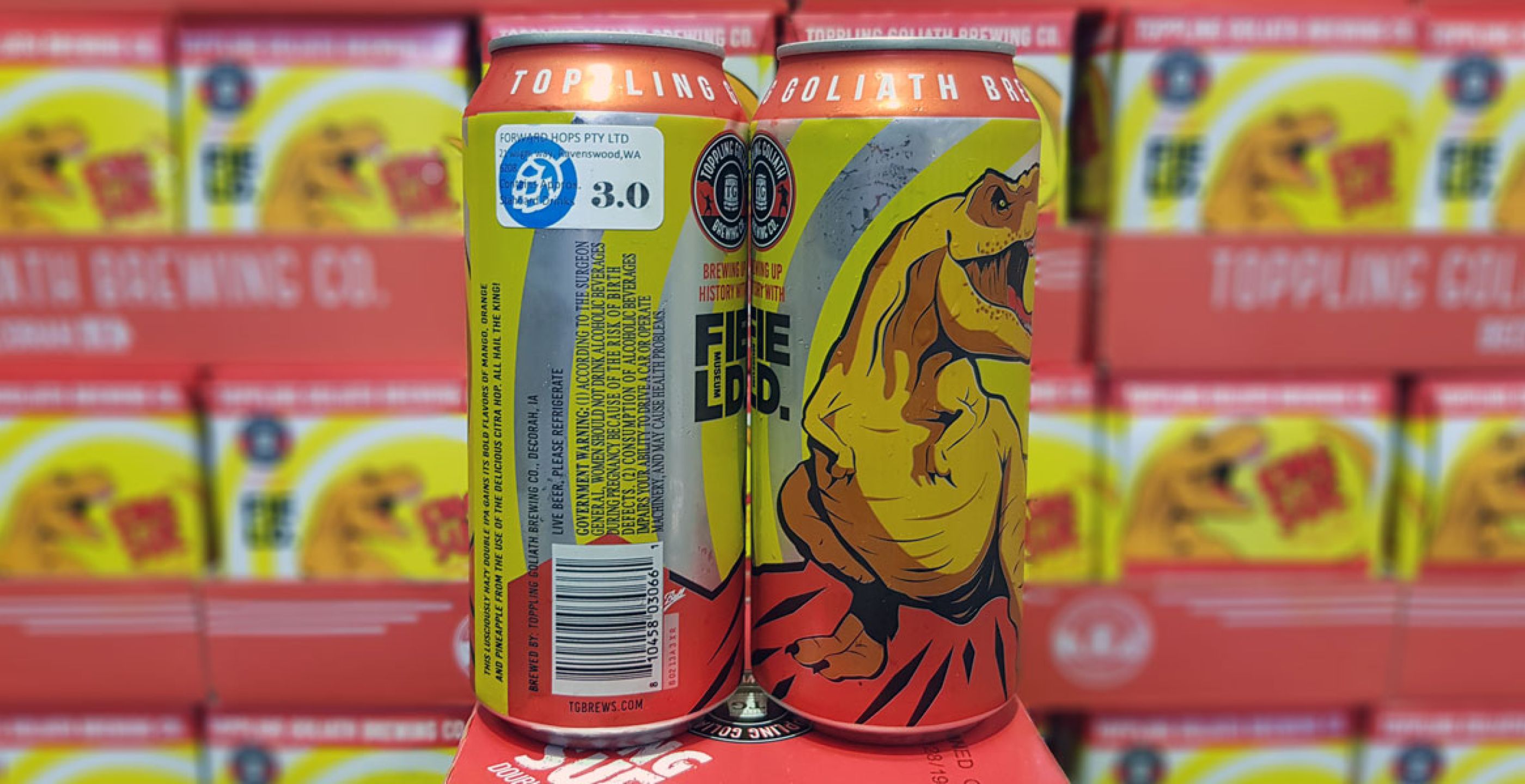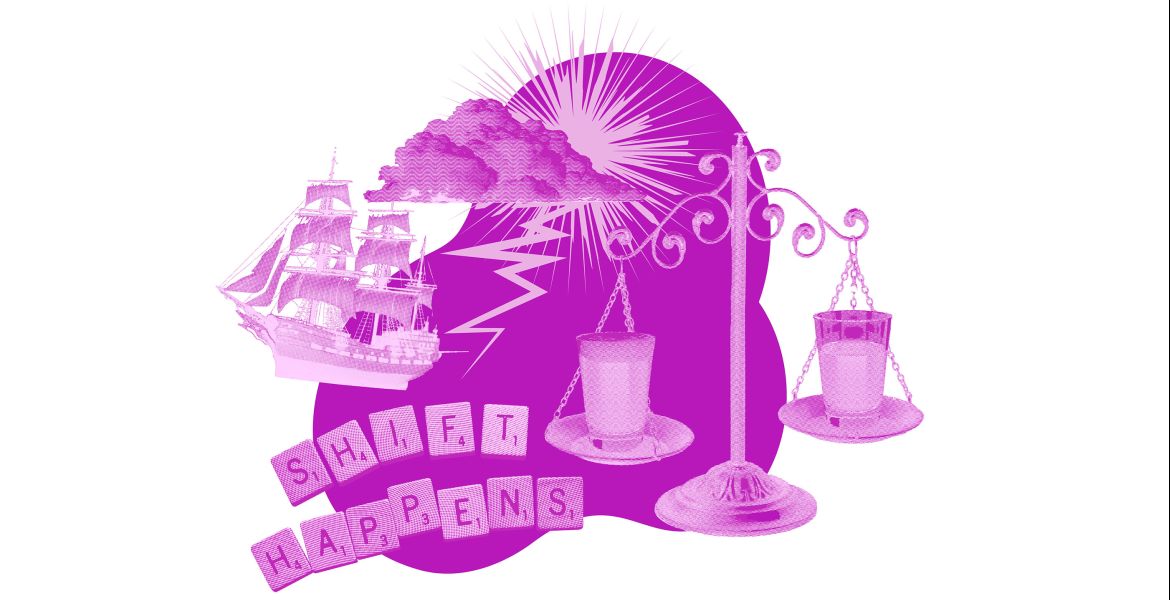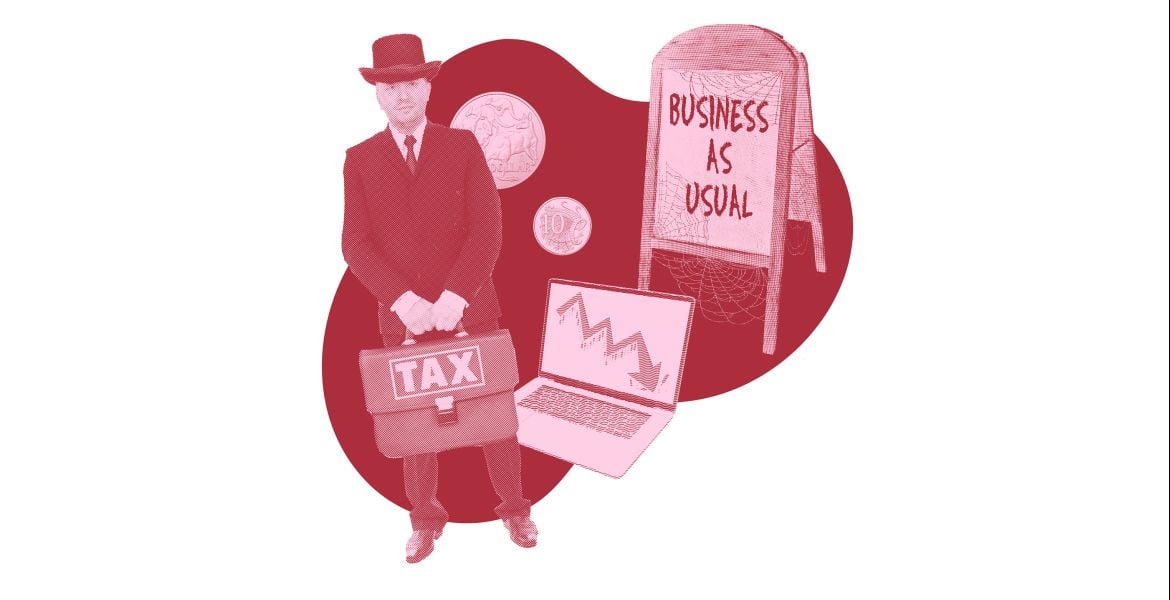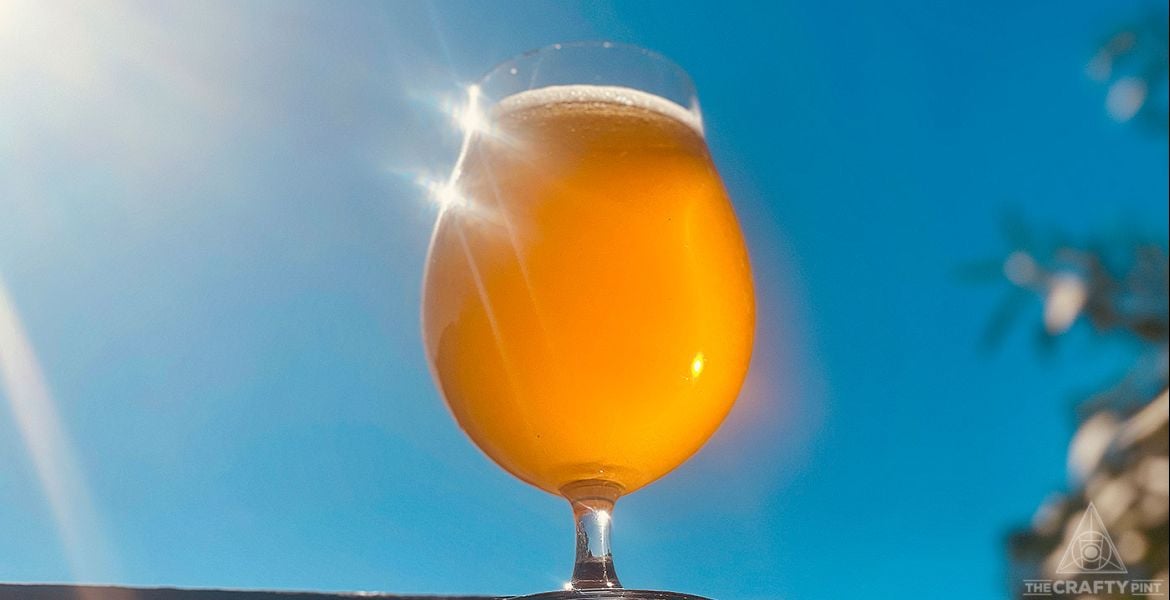Travel back in time to the dim and distant past of, well, all the way to 2014 and you'll encounter a time when there was much discussion around the pros and cons of imported beer. Plenty of grey imports of dubious age were landing on these shores, while some worried that fascination with these shiny foreign baubles would undermine the nascent local beer scene.
There were arguments presented on one side about the benefits of supporting local and the environmental downside of bringing beer across the planet, and on the other about the ability of great beers from other countries to inspire Australian brewers and drinkers, to encourage the local industry to raise its sights and standards.
In the five years hence, the industry here has not only grown at a phenomenal rate but standards have, for the most part, improved markedly too. Many big and highly rated brands from overseas – particularly the US – have attempted to make a mark here without many achieving great and consistent success as drinkers have found much to enjoy from increasingly adventurous Australian breweries.
Yet, at the same time, there's arguably never been a greater buzz among the most avid beer drinkers when it comes to imports. Few events generate as much excitement among the country's beer geeks as tap takeovers featuring lauded and much-hyped breweries from the US, Europe or the UK. Who cares if it's $20-plus for a 150ml sample when it's a sample of that!
To an extent, the rise of such events – often based around beers that land in small shipments and may never be seen again – has been enabled by a new form of importers: small operations with little desire to become large volume shippers of a regular lineup of beer, instead driven by a wish to bring beers they love from brewers they worship to their peers.
It's a situation that seems to give drinkers less reason to buy international plane tickets to sample the exotic beers that were once spoken of in hallowed terms by returning beer travellers. Air-freighted beer events, while still in their infancy, are becoming more commonplace and, what’s more, they're showcasing some of the most sought-after beers in the world in Australian beer venues.
Seemingly gone are concerns over the environmental impact of this aspect of the industry or fears imports could harm local brewers, replaced by an eagerness to get one's hands on the best and brightest.
In a snapshot of this burgeoning beer culture, Guy Southern talks to some of the early drivers of the air-freighted movement.
The Background
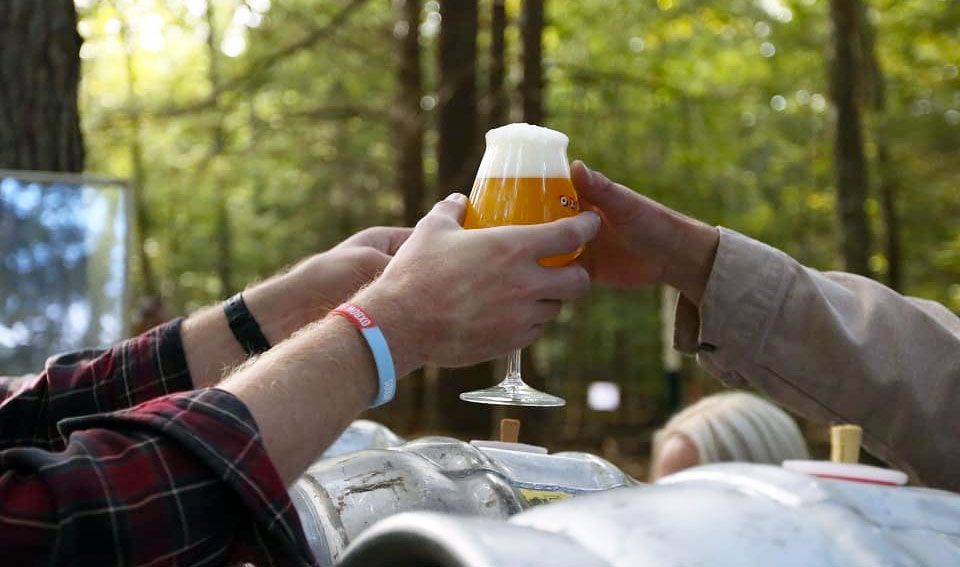
Traditional beer importing typically involves consolidating multiple breweries at one international port location before a month to six-week sea voyage to Australia, with or without refrigeration. The pallets then spend time at customs before Australian regulatory stickers are applied by the importer, at which point beer is distributed throughout the nation, with or without refrigeration. It can be a convoluted process and one that's far from ideal when it comes to presenting most beers, especially hop driven styles, at the level of quality and freshness the brewers intended.
Now, however, there's a new breed of beer importer fast-tracking the transit process by airfreighting beers to Australia, sometimes within a week of their production. There are, however, increased risks and costs, while there's far more at play than just bringing a few beers into Australia. At its meta-level, air-freighting beer is a reflection of the accelerated beer culture being driven by a symbiosis of all players in the beer chain and technology.
To understand how and why it's become such a prominent part of the craftiest of craft beer culture, we spoke to:
- Ben Duval – Manager at Carwyn Cellars in Thornbury, VIC
- Darcy Gibson – Fleetwings Distribution
- Joel Beresford – Co-owner of The Dutch Trading Co in Victoria Park, WA
- David Allen and Peter Krieg – Forward Hops
Why airfreight beer?
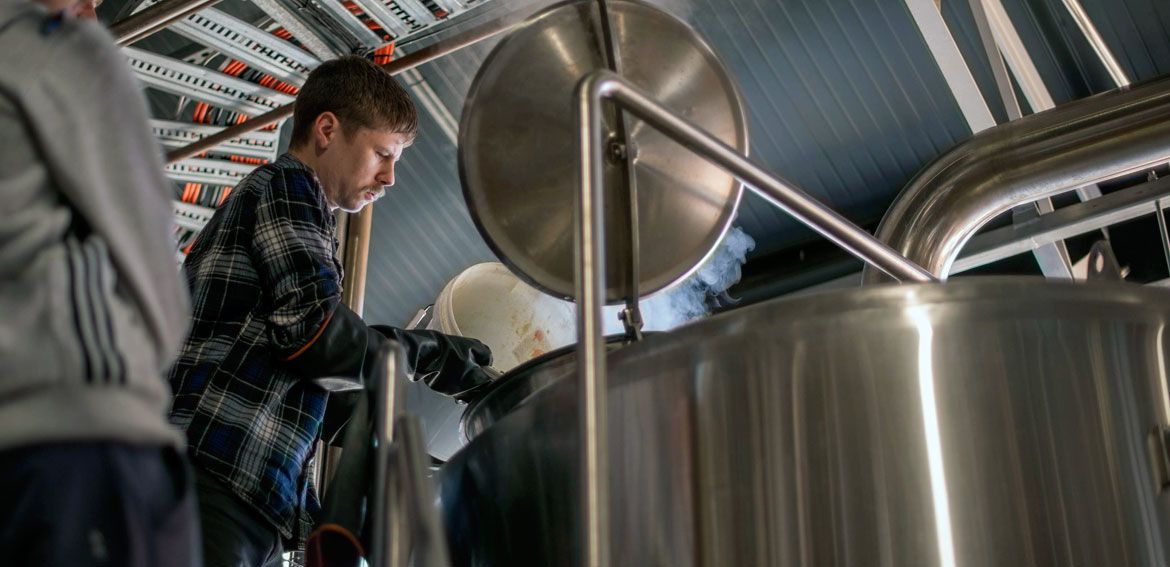
The global dominance within the craft beer world of hop forward beer styles, whether bitter or juicy, has changed perceptions about product care, especially regarding transport. In particular, the ascendance of the New England IPA style has fostered a change in the conversation by providing consumers visual clues for quality that weren’t previously as overt with IPAs.
As a result, the foursome agree that freshness and quality are a major motivation for air-freighted beer events.
Ben Duval: There’s no question the reason we have sought to do so is freshness. We can get beer cold shipped from the US and it arrives in good condition most of the time, but air-freighting takes the risk out of it. Yes, you pay more, but often it is simply worth it.
A lot of these beers are already expensive, like NEIPAs from the US, and to pay $10 for a pot of a beer that may not be in optimal condition is risky for the consumer and often disappointing, especially when there are good fresh local examples available for much less.
Joel Beresford: If you go to all of this effort to source whacky, crazy, cool beers – whales and that kind of stuff – you want the full experience. You either go the whole hog or nothing.
Having worked at Beermash in Collingwood where, at time of publication, they're serving up dozens of air-freighted beers from Scandinavia as part of Pint of Origin at Good Beer Week, Darcy agrees.
Darcy Gibson: I think what I was looking for was an opportunity to import the beers I cared about and also introduce a new business model that is treating certain styles of beers better.
Only a couple of years ago, but it feels like a different time, international IPAs would be sitting on shelves about six-months-old and not too many people, in my experience, were really talking about freshness. Even local breweries were rarely putting Canned On dates on their hoppy beers. But almost overnight the mindset of many of the more dedicated beer drinkers changed.
Freshness was the most important thing; now we have air-freighted international IPA showcases and local breweries, Blackman’s for example, releasing Same Day IPAs, getting beers from canning line to consumer in 24 hours.
The panelists agree that maintaining the cold chain is paramount.
DG: Refrigerated containers, cold couriers and warehouses are always going to be more expensive and harder to come by, but you owe it to the brewery, bar and consumer to ensure beers are being sold in a condition the brewers themselves would be proud of.
JB: You need to nail it because you can put it on tap and brag about it and make people drink it but if it’s not represented as it should be then you’ve fallen over at the finish line.
What’s the cost of making beer fly?

While their intentions are noble, air-freighted beer comes with a price tag. Importation is expensive and time-consuming, something that may go unnoticed as drinkers sip from the latest shipment.
JB: For me to get a few pallets of really cool American or European stuff, if I’m paying $20,000 just to buy that stuff, then there’ll be another $10, 000 to $15,000 for transport, duty and customs, and you’ve gotta pay that straight up. So, before it even hits shelf or fridge, you’re $30,000 to $50,000 in the hole. And, that’s not even knowing what condition the product is in.
Also, you may get some of it and may also get something else. There’s a lot of room for error and it’s a big risk.
For example, [for an] air-freighted Danish Alefarm event [we hosted] there was very little money made but it was more a celebration of the opportunity of being able to drink these beautiful beers fresh. In terms of margin, it was one of the lowest but the final product is people enjoying it and letting me know that they’ve enjoyed it.
DG: Air-freighting beers is a lot of effort, especially if you are consolidating half a dozen breweries from around a state. The breweries, freight companies and distributors are all working much harder to meet strict timing windows to get beers to consumers is the best condition possible.
Also, due to the significantly higher costs of air-freighting, it’s being done for a fraction of the profit. It’s more a labour of love than it is a business model.
The costs aren't just financial either...
DG: Transporting beer by air, sea or truck from one place to another is going to create unnecessary emissions, unfortunately, which is certainly something I consider, though my main focus is creating opportunities for people to experience beer.
Considerations like duty, customs, freight need to be factored into unit price, as well as fluctuations in the Australian dollar. As such, errors in this space can be extremely costly, especially when most we spoke to estimate that air-freight costs eight to ten times the price of sea-freight. And then there are unforeseen issues...
David Allen: Sometimes you just pull your fucking hair out. We went over to Melbourne for our last shipment at Christmas. It probably cost us upwards of $6,000 in the last order purely in waiting around with extra flights and accommodation. Customs want to X-ray everything but don’t have the contracting company to be able to do that so everything gets held up.
BD: With the help of Garage Project, we were air-freighting a pallet of Hill Farmstead as well as some Other Half and Tired Hands kegs. It was already going to be very close to the event when the two pallets got refused at JFK airport due to "leaking" and sent back to Other Half. It turned out it was just condensation, but it put the airfreight back another two days!
The beer ended up arriving in Melbourne on the Friday morning and was delivered to Carwyn at 5pm the same day for our Saturday morning event! When we unwrapped the pallet of Hill Farmstead, we got covered in a stream of delicious beer as the clever transport company has stapled the transport manifest into a plastic Keykeg...

However, there is still a seemingly insatiable appetite for new and rare beer.
Peter Krieg: [Our shipment from Californian brewery] Rare Barrel is going to one venue, Carwyn. We brought that one pallet in for the whole of Australia [so] for one shop to commit to a wholesale $30,000 pallet, it’s incredible, but obviously Rare Barrel being what they are, they’ve got that name behind them.
DA: That one pallet is more expensive than three pallets we’re bringing in from Modern Times. We had to really work out how to move something so expensive coming into the country. We sat down and said: "How are we going to release this?" and the next minute we didn’t even need to do it.
As a result of the extra effort and expense that comes with air-freighting, punter price sensitivity seems to have become less of a concern.
BD: We’ve found that people are happy to pay approximately 50 percent more to guarantee the beer they are buying is the way the brewery intended. Also, the price isn’t always as crazy as one might think.
Most of our customers are buying rare air-freighted beers on tap in a 150ml wine glass serving for approximately $10 to $12 per glass. This is a good serving size considering many are high in alcohol and it allows the customer to try many of the different beers we have on tap. A typical glass of local wine in the same serving size sells for around the same price in many bars around town.
That said, Joel believes there is still some way to go on this front, with pricing of such beers an extreme manifestation of the challenges local brewers have to explain to a newcomer to craft beer why their hoppy pale ale costs more than a big brand equivalent.
JB: It’s very funny when people complain about the price of beer. If they actually realised how many hours are put in, firstly getting people to agree to send that beer over, you could be talking months alone on that. Then there's getting that logistical situation sorted out and making sure that’s on point every step of the way from brewery to port in the country of destination. It’s not just the country of destination – it's also how it gets to the venue as well.
The chicken or the egg – who is driving air-freighted beer?

Given the challenges and expenses, why are many international breweries – especially small and medium-sized operations – willing to consider exporting?
BD: Airfreight seems a real drawcard in convincing breweries to send their beer to Australia. They are less concerned with the price at the bar, but more worried the beer presents as the brewery intended.
DG: I think all brewers, especially smaller ones, have a degree of suspicion when they get an email saying: “Hey! Let’s send some of your beers across the world, it’ll be fun!”
Medium to smaller breweries, or at least those with a different brewery model, don’t have beer to export. They will consistently sell out of beer in their home market and have no financial incentive to export beer. Naturally, these are the breweries that consumers want the most.
In this case, their reason to export it can be anything from loving Australia, wanting to visit, or being interested in the event idea. I have had a lot of success in the regional showcase format, the exploration of a single state or city’s beer is a pretty interesting concept from both the brewing to consumer side of things.
One thing for certain about these kinds of breweries is the motivation to export beer to Australia is rarely financially driven. They could make much more money selling a keg out of their own taproom than they would sending the beer to Australia – not to mention [doing that] at a fraction of the effort. When these breweries have events in Australia it’s because, for one reason or another, they are just passionate about sharing their beer with us despite the extra costs and efforts involves. It’s a labour of love.
So, who is driving the air-freighted beer movement?
BD: “Ultimately, it's consumer driven. If we look at the States, this is where many of the best and most talked about brewers of hop-driven beers come from. Our customers want to try beers from these breweries and will happily pay a premium to consume them in the best possible condition. In fact, if we don’t bring them in, then they will find a way to get their hands on them through the secondary market!
DG: “Largely, the consumer. Venues and importers had a lot to do with the freshness conversation beginning in the first place, and people in the industry love to get nerdy and creative with showcasing new breweries. Though it’s important to remember that both distributor and bar significantly drop their margins to put on these events.
It is the beer geek’s constant desire to be trying new and interesting beers that makes air-freighted events happen.
PK: I think it’s a combination of the consumer, venues and importer. You’ve gotta have importers bringing in exciting products, but then one consumer spreads a picture of a hazy, delicious juice bomb and it goes viral, it goes insane.
But then you’ve also gotta have venues pushing products and it’s also freshness. That benchmark just keeps getting set and set and set, especially now with importers like ourselves and especially that East Coast IPA style.
Do believe the hype. Maybe.
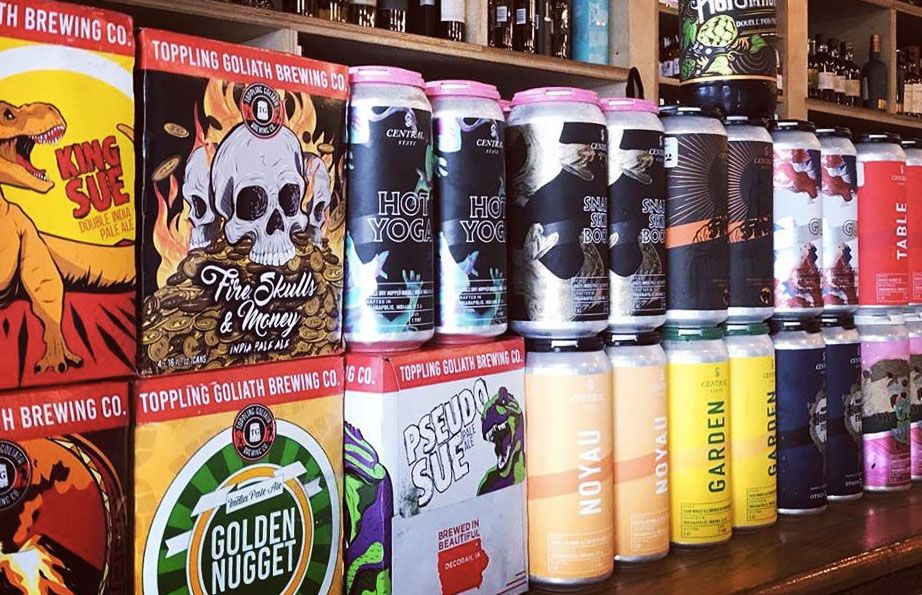
The consumer wouldn't be able to drive beer culture in such a manner without harnessing social media. For many years, the most sought-after beer in the world was Westvleteren XII, a Trappist Quadrupel only available from a café opposite the monastery where it was brewed plus select locations in Belgium. While exclusivity undoubtedly played a part in its rarefied position, both the bottle design and the monks that brew the beer eschew any promotion, especially nothing which requires international travel.
Fast forward to the end of this decade and many beer venue fridges and decal lineups look like a Surrealist's dream waiting to be researched, photographed and ritualised on social media, sometimes before consumption.
This behaviour has mirrored the pervasive nature of smartphones and social media, informing the idea of today’s beer drinker as a prosumer – an enthusiast who, in part, drives an industry through consumption, who is hyping and thereby influencing the very culture they devour.
BD: Undoubtedly hype, Untappd and social media play a huge role. In most cases, it’s instigated from a brewery’s own marketing or social media driven. Air-freighting and pop-up events certainly add to the hype, but consumers wouldn’t want to buy the beers as much if they didn’t already have some sort of reputation.
DG: One hundred percent social media drives this, the two major platforms being Instagram, for beer releases and news, and Untappd, for reviewing purposes.
The ability to closely follow hundreds of breweries from all over the world and check statistical breakdowns of the highest rated beers and breweries for that year, month or even week has given everyone, whether they travel overseas often or not, knowledge of what is happening out there in the beer world.
I think it is an incredible tool for consumers, bars and distributors. We can learn about the philosophy, brewing style, design choices and consumer reaction of any brewery in the world regardless of whether they have the smallest setup imaginable in the most remote location possible. What other industry in the world has that sort of info available for free?
Not that such platforms are without their risks – not just in terms of the challenges of cutting through the hype and herd mentality, but also in terms of how it can impact the Australian industry.
DG: There are lots of reviews and data available and we can form our own opinion on what is being brewed and how it is being presented, but it is very, very, very different from actually trying a good range of their beers. Insta and Untappd have created the "hype culture". It is why breweries are employing more and more "party tricks", for lack of a better term, to sell beer. This info online can distort the way we look at beer and I worry what effect this has on local breweries.
If I sit down at a bar in Melbourne and flick through my Instagram I might see 30 world-class breweries releasing brand new, amazing sounding beers in styles that I love; it might be easy to look at the local tap list and say: “Man, there is so much better beer in the US, Australian breweries do nothing like this.” But it’s extremely misleading.
These 30 amazing breweries are likely spread across 20 US states, each one only making their beers available at their taproom after a two to three hour wait in line. So, even if you lived in the US, you may be lucky to try four of these 30 new beers, maybe five if you dip into the pretty toxic second market developing there.
In short, I think it’s important to remember that Australian beer fans are very lucky to have the great local breweries and imported events that we do. Given the small population of Australia compared to the USA and Europe, I think we should be very proud of the quality of our locally made beer.
My personal imports happen so rarely that I don’t think they could be considered competition to local breweries. I like to think that, due to the difference in price and concept, if I have a once-off showcase every couple of months it acts as a compliment to local beer not an alternative.
DA: We support local. I buy local. I’ve invested money into Otherside Brewing and I see nothing but growth in local.
We can’t do what locals do – we can’t bring in a beer every week. So, I don’t see it being a massive problem to locals. We’re a fad when it comes in, everyone’s on Instagram and going berserk, and then it sells out and then everyone’s gotta wait another two months, including us.
You can read other articles in our wide-ranging Big Issue series here.



